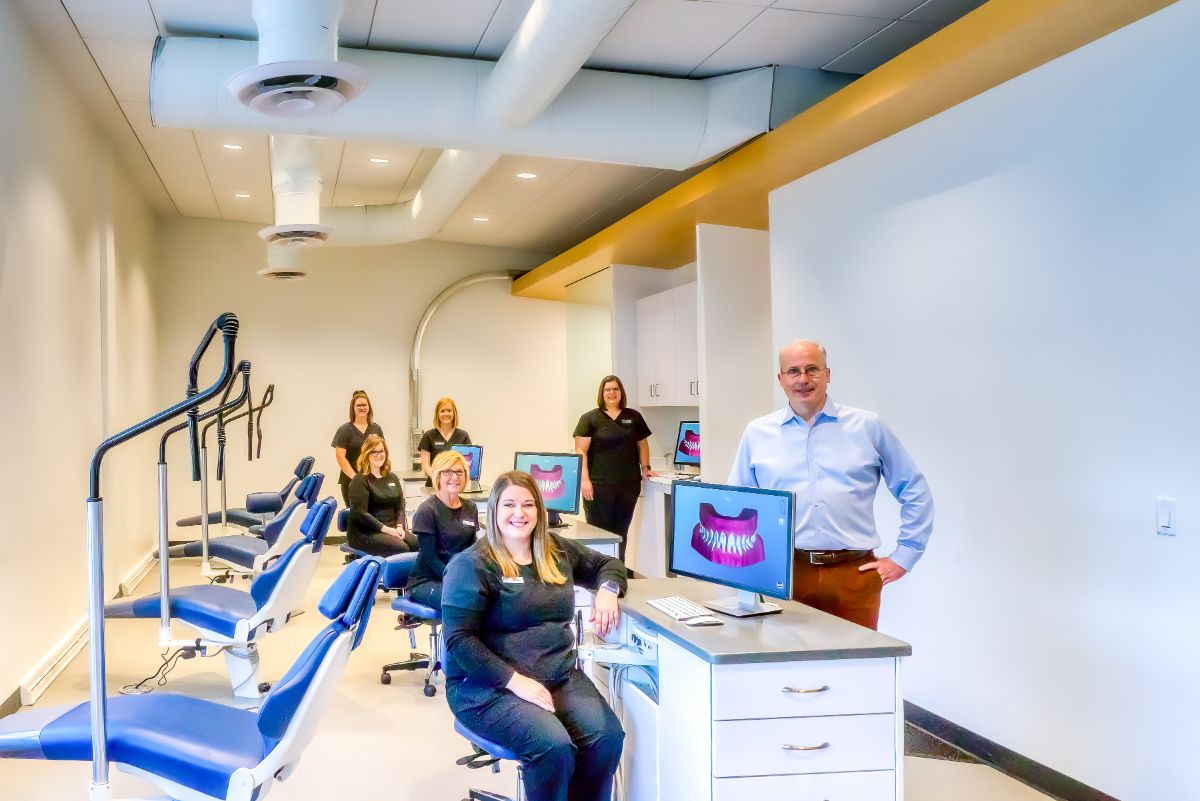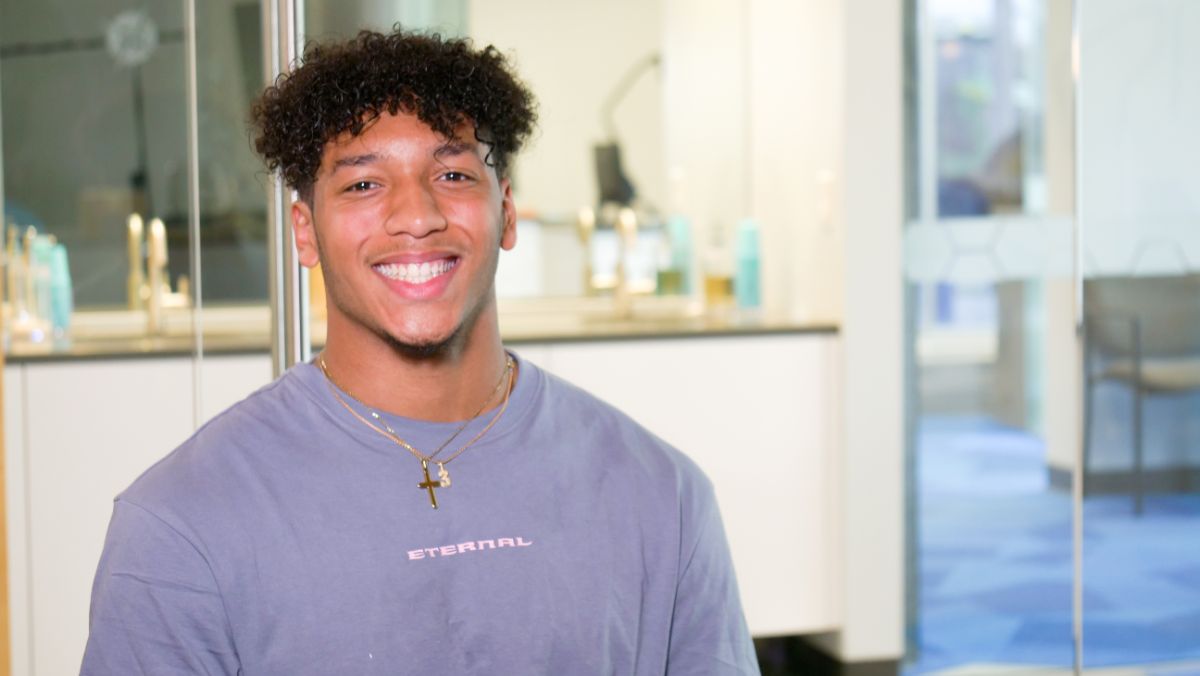It’s taken a lot of hard work, dedication, and even some sacrifices on your part, but you made it! It’s finally time to reveal your beautiful new smile. Everyone here at Howard Orthodontics is proud of you for doing such a good job. We’re almost as excited as you are to see the final results! While getting your braces off or using your last aligner is certainly something to celebrate, there’s still one more phase of treatment ahead, and this second stage is just as important as the first!
The retention phase is what rounds the whole process out, giving you exceptional and long-lasting results. Once you complete the active phase of treatment, Dr. Howard will provide you with a retainer that’s been customized for your new smile. Using that retainer as directed will keep your newly straightened teeth in place! These orthodontic tools are an essential part of any treatment plan, so we’ve put this overview together to help prepare you for this transition.
What are retainers? What do they do?
Our teeth are pretty stubborn. While orthodontic treatment can move them into more desirable positions, they’re always trying to get back to where they used to be. Your teeth are most susceptible to shifting in the first year after active treatment, when they can begin drifting back towards their original positions in as little as a few days!
Throughout the treatment process, your teeth are constantly supported by orthodontic appliances like braces or clear aligners. Once that support is removed, your teeth are at an increased risk for relapse occurring. Relapse describes the way our teeth naturally shift as we get older, and it can happen to anyone, even those who have had orthodontic treatment. Fortunately, there’s a simple solution to keep your newly straightened teeth where they’re meant to be—wearing a retainer!
In order to understand the importance of retainers, it helps to have a basic idea of what happens during treatment. Your teeth aren’t set in your jaw like fence posts encased in concrete. Instead, each tooth is held in its socket by elastic ligaments that attach the roots to the bone. These ligaments are living tissue affected by tooth movements, and this attachment allows us to create a more aligned smile. New ligaments and bones are formed when we put tension on and around your teeth with orthodontic appliances. This is known as the remodeling phase of treatment.
Once this phase is complete, the tissues, ligaments, and bone involved in the process will need some time to stabilize. This is where retainers enter the picture! It can take several months to a few years for the new position of your teeth to become more permanent. Wearing your retainer exactly as directed by Dr. Howard will help hold your teeth in place as this process occurs. Without a retainer, your teeth will have trouble stabilizing and are more likely to revert to their pretreatment positions over time.

What are the different types of retainers available?
There are two types of retainers available to patients: fixed and removable. When deciding which one is best for your smile, Dr. Howard will consider your unique needs, your preference, and the overall compliance expected from you.
Fixed retainers
Fixed retainers are also known as permanent or bonded retainers. They consist of a thin wire that’s bonded behind the bottom and top teeth. Because this bonded wire can hold your teeth in the ideal alignment over a long time, fixed retainers often have exceptional results.
If you have a fixed retainer, you’ll need to brush and floss carefully to ensure it stays clean. Since the wire stretches across several teeth, dental hygiene is similar to what a patient in braces experiences. Tartar can build up around the wire, so be sure to follow up with your dentist every six months or so.
Removable retainers
There are a couple of different options available when it comes to removable retainers. The Hawley and Essix models are both custom-designed to fit your mouth for the best results.
Hawley retainers
Hawley retainers are one of the oldest retainers. They’re made of stainless steel and kept in place by wrapping a wire around your teeth. That wire has been combined with an acrylic arch that rests against the roof of your mouth, and it can be adjusted to continue minor movement of the front teeth if needed. Although many orthodontists are moving away from using this type of retainer, it can still be helpful in some instances.
Essix retainers
Essix retainers look very similar to the clear aligners used with the Invisalign system. The trays are made of transparent plastic and molded to the unique shape of the patient’s mouth. Essix retainers may cover the entire arch of the teeth or only go from canine to canine. This type of retainer is very subtle and should last as long as you need it, provided you care for it properly.
Cleaning your teeth is more manageable with removable retainers, but you will have to remember to wear them daily. When you aren’t wearing your retainer, be sure to place it in a secure case to keep it safe! They can also be easy to misplace or damage, so you’ll also need to be mindful of where it is at all times and be careful when handling it.
How long will a retainer need to be worn once treatment is complete?
The latest orthodontic research suggests that for the best results, patients will need to wear some type of retainer indefinitely, at least part-time. We know this can sound a little overwhelming at first, but don’t worry—you’ll get used to wearing your retainer in no time at all. Before you know it, it’ll be just one more part of your daily routine! After a while, wearing it a few nights each week will likely be all you need to keep your teeth from shifting.

Keep your smile looking its best with Howard Orthodontics
We’re so close to revealing the beautiful smile you’ve been working so hard for! The last thing you want is for your teeth to start shifting back to their old positions once treatment is complete. Once we remove your braces or you use your last aligner, you can keep your teeth looking their best by wearing your retainer as directed by Dr. Howard.
Howard Orthodontics is committed to meeting all your orthodontic needs through every phase of treatment, including retention! If you’re looking for more information on the role retainers play after active treatment, contact our expert team today. We’ll be happy to answer any questions or concerns you may have about keeping your smile looking and feeling fantastic!
